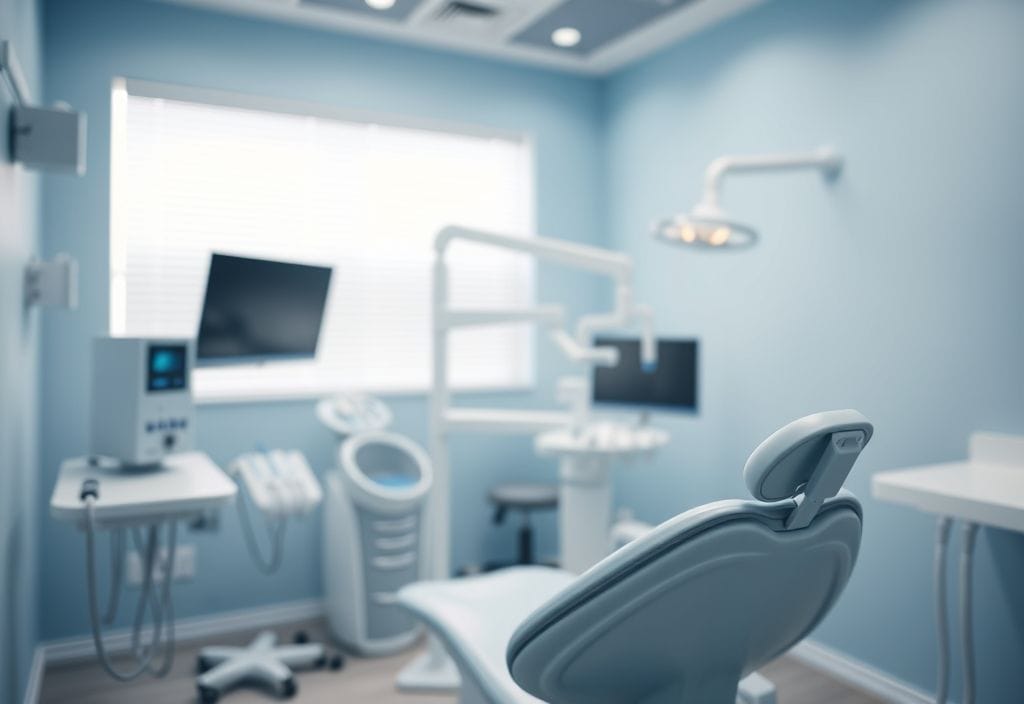Why don’t dentists use nitrous oxide anymore? This question often arises as patients notice laughing gas becoming less common during dental visits. The answer lies in safety concerns, environmental factors, and new sedation methods that offer more precise, comfortable care. Dentists are now turning to alternatives that better meet patient needs and reduce side effects while maintaining effective pain relief and anxiety control.
1. What Led Dentists to Reduce Nitrous Oxide Use
Nitrous oxide, commonly called laughing gas, was once the preferred method to help patients relax during dental visits. Many people ask when dentists stopped using nitrous oxide regularly. Over the last 10 to 15 years, dentists have gradually shifted away from this method due to evolving safety standards, environmental concerns, and the rise of more effective sedation techniques.
When Did Dentists Stop Using Nitrous Oxide
Dentists began reducing nitrous oxide use around the early 2010s as alternatives became safer and more customizable. While still used in some practices, it is no longer the default sedation for many treatments. This change reflects a broader focus on patient-centered care and environmental responsibility.
Do Dentists Still Use Laughing Gas
Yes, nitrous oxide remains an option for certain patients. Dentists may use it for mild sedation or to ease anxiety, especially for shorter procedures. However, many now prefer sedation methods that provide longer-lasting effects and fewer side effects, improving overall patient comfort.
Reasons Behind the Shift Away from Nitrous Oxide
- Growing concerns about side effects such as nausea and dizziness
- Environmental impact due to nitrous oxide’s contribution to greenhouse gases
- Stricter regulations on the use and storage of the gas
- The availability of safer and more effective sedation alternatives
Understanding Different Sedation Options Compared to Nitrous Oxide
| Sedation Method | Common Use Cases | Benefits | Limitations |
|---|---|---|---|
| Nitrous Oxide | Mild anxiety, short visits | Quick onset, minimal recovery | Possible side effects, environmental concerns |
| Oral Sedatives | Moderate anxiety, longer visits | Easy administration, effective | Requires advance timing |
| Intravenous Sedation | Complex procedures | Deeper sedation, controlled | Requires monitoring, higher cost |
| Local Anesthetics | Routine dental work | Effective pain control | No anxiety relief |
How Patient Feedback Influences Sedation Choices
- Patients who experience bad reactions to nitrous oxide often request other options
- Dentists tailor sedation plans to individual preferences and medical history
- Improved patient comfort leads to higher satisfaction and trust
- Flexible sedation approaches allow better management of anxiety and pain
- Educating patients on sedation options helps them make informed decisions
2. What Dentists Use Instead of Nitrous Oxide
As the use of nitrous oxide has declined, many dental professionals have turned to alternative sedation and pain management methods. Patients often ask what dentists use instead of nitrous oxide and whether these options are safer and more effective. This section explores the most common alternatives available today and how they help improve patient comfort during dental procedures.
Common Sedation Alternatives Replacing Nitrous Oxide
Dentists now rely on a range of sedation methods tailored to patient needs. Oral sedatives, intravenous (IV) sedation, and enhanced local anesthetics are among the most popular choices. These options offer greater control over sedation depth and duration compared to laughing gas.
Advantages of Modern Sedation Methods
Newer sedation techniques provide several benefits, including reduced side effects, longer-lasting relief, and customizable dosing. This means dentists can better match sedation to the complexity of the procedure and the patient’s anxiety level. Many patients find these options less intimidating and easier to tolerate.
What Sedation Alternatives Do Dentists Use Now?
- Oral sedatives like benzodiazepines for mild to moderate anxiety
- IV sedation for more profound relaxation during longer or more invasive treatments
- Local anesthetics with improved formulations for effective pain relief without sedation
How Modern Sedation Is Improving Patient Experiences
A dental practice in California reported a 30% increase in patient satisfaction after switching from nitrous oxide to oral and IV sedation options. Patients felt more comfortable and less anxious during procedures, especially those involving wisdom teeth removal and fillings.
How Dentists Customize Sedation Plans
- Assess patient medical history and anxiety levels
- Choose sedation type based on procedure complexity
- Monitor patient response during treatment
- Offer clear pre- and post-procedure guidance
- Provide options for non-pharmacological anxiety management, such as guided relaxation and distraction
3. Using Laughing Gas for Wisdom Teeth Removal
Many patients wonder if dentists still use laughing gas for wisdom teeth removal and if it remains a safe and effective option. Wisdom teeth extraction is often more invasive and painful, requiring more profound sedation. This section explores how sedation approaches for this procedure have evolved and what dentists typically recommend today.
Sedation Options for Wisdom Teeth Removal
Dentists typically choose sedation based on the procedure’s complexity and the patient’s anxiety level. While laughing gas may be used for mild sedation, IV sedation and oral sedatives have become more common to ensure more profound relaxation and pain control during wisdom teeth extraction. Modern dentistry relies heavily on local anesthetics that provide effective pain relief with improved formulations, ensuring patients remain comfortable throughout procedures.
Why Laughing Gas May Not Be Enough for Wisdom Teeth
Because wisdom teeth removal can involve longer, more complex surgery, nitrous oxide alone may not provide sufficient sedation. Many patients require more profound sedation than laughing gas can achieve, prompting dentists to offer other methods for better comfort.
Comparing Sedation Methods for Wisdom Teeth Removal
| Sedation Type | Depth of Sedation | Recovery Time | Common Uses |
|---|---|---|---|
| Nitrous Oxide | Mild sedation | Fast recovery | Simple extractions, anxious patients |
| Oral Sedation | Moderate sedation | Several hours | Moderate procedures |
| IV Sedation | Deep sedation | Few hours | Complex wisdom teeth removal |
| General Anesthesia | Full unconsciousness | Longer recovery | Surgical extractions in hospital settings |
Expert Perspective on Sedation Choices for Wisdom Teeth
Dentists emphasize the importance of individualized sedation plans. Factors like patient health, anxiety levels, and procedure complexity guide the choice. While laughing gas remains an option, it is often supplemented or replaced by stronger sedation for wisdom teeth removal to maximize patient comfort and safety.
How to Prepare for Sedation During Wisdom Teeth Removal
- Discuss sedation options and concerns with your dentist beforehand
- Follow all pre-surgery instructions carefully
- Arrange for someone to drive you home after sedation
- Avoid eating or drinking as advised before the procedure
- Inform your dentist about any medications or health conditions
4. Using Laughing Gas for Fillings Today
Many patients ask if dentists use laughing gas for fillings in modern dental care. Fillings are among the most common dental procedures, often requiring effective pain management and sometimes mild sedation. This section explains how sedation for fillings has changed and what options dentists offer Today to ensure a comfortable experience.
How Sedation Has Evolved for Fillings
In the past, nitrous oxide was commonly used for fillings to ease anxiety and reduce discomfort. While some dentists still offer laughing gas, many now rely on local anesthetics combined with other sedation techniques. This shift ensures effective pain control without unnecessary sedation.
Why Alternatives Are Preferred for Fillings
Dentists prefer targeted local anesthetics to numb the specific area during fillings. This approach avoids side effects sometimes associated with nitrous oxide, such as nausea or dizziness. For anxious patients, oral sedatives or calming techniques often supplement local anesthesia without the need for laughing gas.
What You Should Know About Sedation During Fillings
- Local anesthetics are the most common choice for effective pain relief
- Nitrous oxide is reserved for patients with mild anxiety or specific needs
- Oral sedatives may be used for those requiring additional anxiety control
How Local Factors Influence Sedation Choices
Dental practices in urban areas often have more access to various sedation options than rural clinics. Patients in metropolitan regions benefit from advanced sedation techniques, while those in smaller towns may have fewer choices. Sensory comfort, such as soothing music or aromatherapy, is also increasingly used to enhance the experience.
Tips to Stay Comfortable During Fillings
- Communicate any anxiety or discomfort to your dentist
- Request sedation options early during your appointment planning
- Practice deep breathing or mindfulness techniques
- Bring headphones to listen to calming music
- Follow post-procedure care instructions carefully
5. Understanding and Overcoming Bad Experiences with Nitrous Oxide
While nitrous oxide has helped countless patients relax during dental procedures, some have reported a bad experience with nitrous oxide. These experiences can range from mild discomfort to unpleasant side effects, contributing to the decline in its use. This section explores the common issues patients face, why they happen, and how modern dental care addresses these concerns to ensure a better experience.
Common Side Effects from Nitrous Oxide
Patients sometimes report nausea, dizziness, headaches, or feelings of claustrophobia when using nitrous oxide. These side effects can vary in intensity depending on the individual’s sensitivity and dosage. Understanding these reactions helps dentists tailor sedation plans for each patient.
Why Some Patients React Poorly
Certain factors increase the likelihood of a bad reaction, including pre-existing medical conditions, anxiety levels, or improper administration. Dentists take these risks seriously and screen patients carefully before recommending nitrous oxide.
Most Reported Issues with Nitrous Oxide
| Side Effect | Frequency | Typical Duration | How It Affects Patients |
|---|---|---|---|
| Nausea | Moderate | Short-term | Causes discomfort, may interrupt treatment |
| Dizziness | Common | Brief | Can cause unsteadiness and unease |
| Headaches | Less common | Short to moderate | Mild to moderate pain after use |
| Claustrophobia | Rare | During treatment | Feelings of confinement or panic |
| Fatigue | Occasional | Post-treatment | Temporary tiredness or lethargy |
| Vomiting | Rare | Short-term | Severe reaction requiring attention |
Tips to Avoid Negative Experiences
- Inform your dentist about any past reactions to sedation
- Follow all pre-treatment instructions carefully
- Communicate openly about how you feel during the procedure
- Consider alternative sedation options if recommended
- Practice relaxation techniques before your visit
6. The Future of Sedation in Dentistry and Patient Comfort
Dentists continually seek better ways to ease anxiety and pain during treatments. Understanding the shift from nitrous oxide helps patients feel more confident in their care. This section shares a story that illustrates how sedation options can transform a patient’s dental experience for the better.
How Modern Sedation Changes Dental Visits
New sedation methods provide personalized comfort, enabling patients to face procedures without fear. This shift supports better dental health by encouraging regular visits and proactive care.
Why Patients Are More Comfortable Today
With choices like oral sedatives and IV sedation, patients no longer feel limited to laughing gas. Dentists focus on safety, effectiveness, and patient preferences to create a calm environment.
Why Updated Sedation Methods Benefit Patients More
- Tailored sedation levels to fit each patient
- Reduced side effects compared to traditional methods
- Faster recovery and less downtime
- Enhanced trust between the patient and the dentist
- Improved overall treatment outcomes
A Patient’s Journey to Overcoming Dental Anxiety
Jane, a longtime dental avoider, once dreaded her appointments due to bad experiences with laughing gas. After discussing options with her dentist, she tried oral sedation and local anesthesia combined. The difference was remarkable. She completed treatments comfortably and now visits regularly without fear.
How You Can Prepare for Your Next Dental Visit
- Talk openly about any past sedation experiences
- Ask about sedation options that suit your needs
- Follow pre-appointment instructions carefully
- Bring a friend or family member for support
- Practice relaxation techniques before and during your visit
Conclusion
The question of why dentists no longer use nitrous oxide reflects a meaningful shift in dental care. While laughing gas was once the mainstay for sedation, evolving safety standards, environmental concerns, and patient preferences have driven dentists to adopt more tailored and effective sedation options.
Today’s dental sedation prioritizes comfort, control, and individualized care, ensuring every patient’s experience is as pleasant and safe as possible. Understanding these changes empowers you to make informed decisions about your dental visits and sedation choices.
If you want to learn more about how nitrous oxide helps ease dental anxiety, read this detailed article on its effects during dental visits.
Frequently Asked Questions
Why are dentists using less nitrous oxide now?
Dentists use less nitrous oxide due to safety concerns, environmental impact, and the availability of better sedation methods that offer improved patient comfort.
Is nitrous oxide completely phased out in dental care?
No, some dentists still use laughing gas selectively, especially for mild sedation or anxious patients, but it’s less common than before.
What sedation options do dentists use instead of nitrous oxide?
Common alternatives include oral sedatives, intravenous sedation, and advanced local anesthetics tailored to patient needs and procedure complexity.
Can nitrous oxide cause harmful side effects?
Yes, some patients experience nausea, dizziness, or headaches, which is why dentists carefully evaluate their use and may recommend alternatives.
Is sedation necessary for simple procedures like fillings?
Not always. Many fillings require only local anesthetics, but sedation options like oral sedatives or laughing gas can help anxious patients feel more relaxed.




